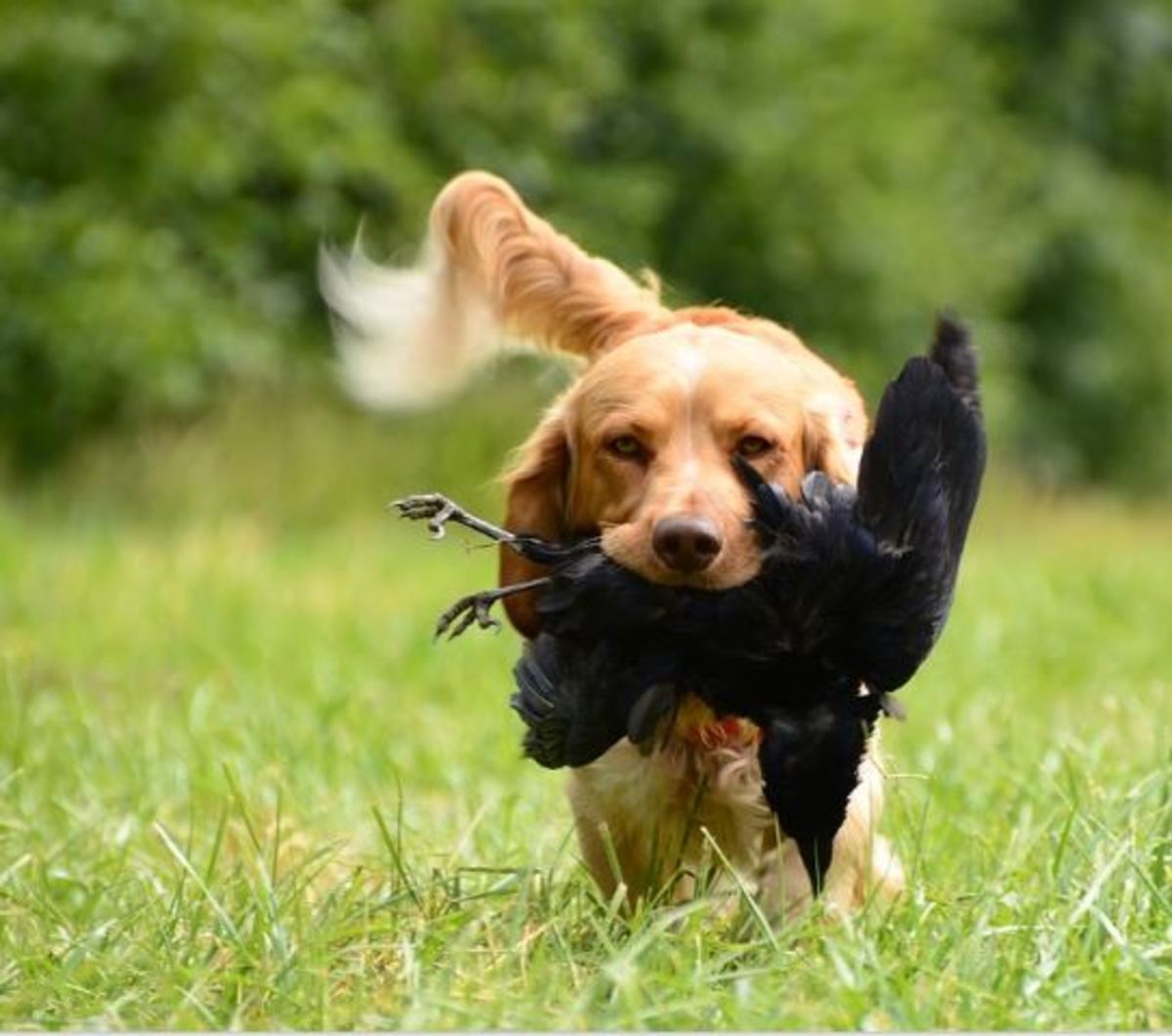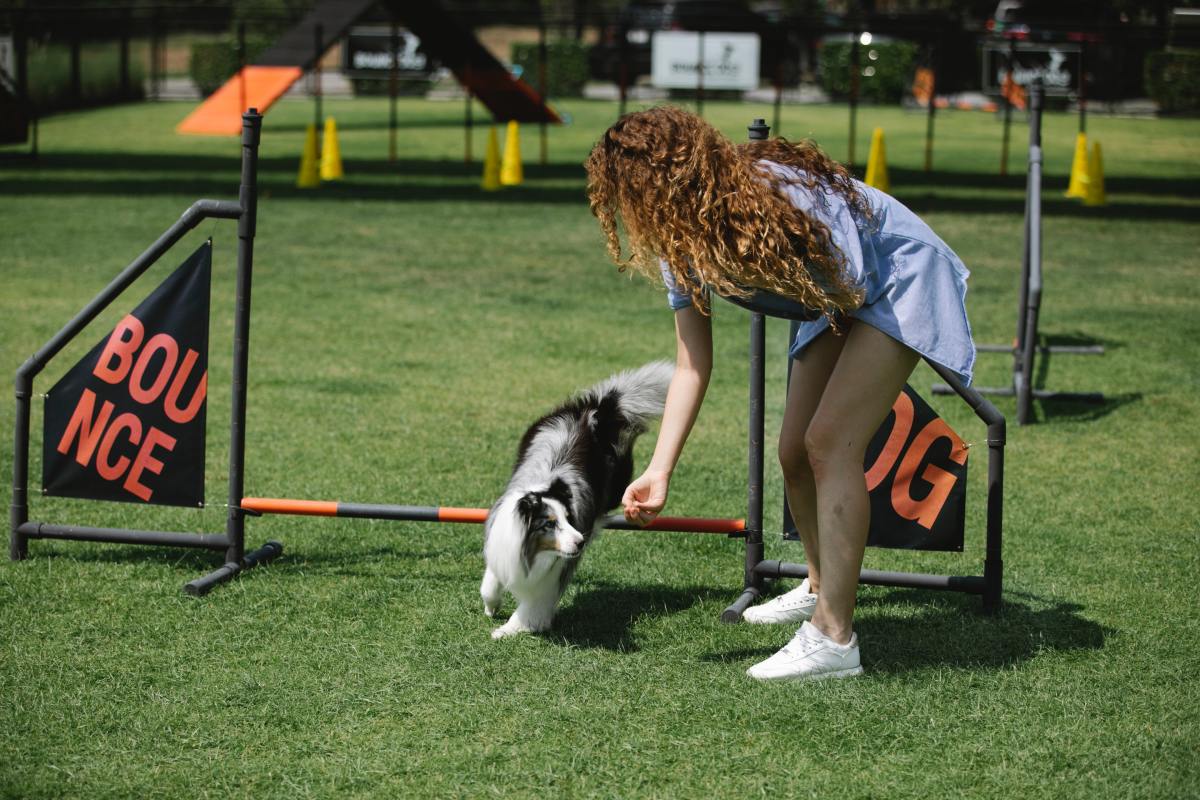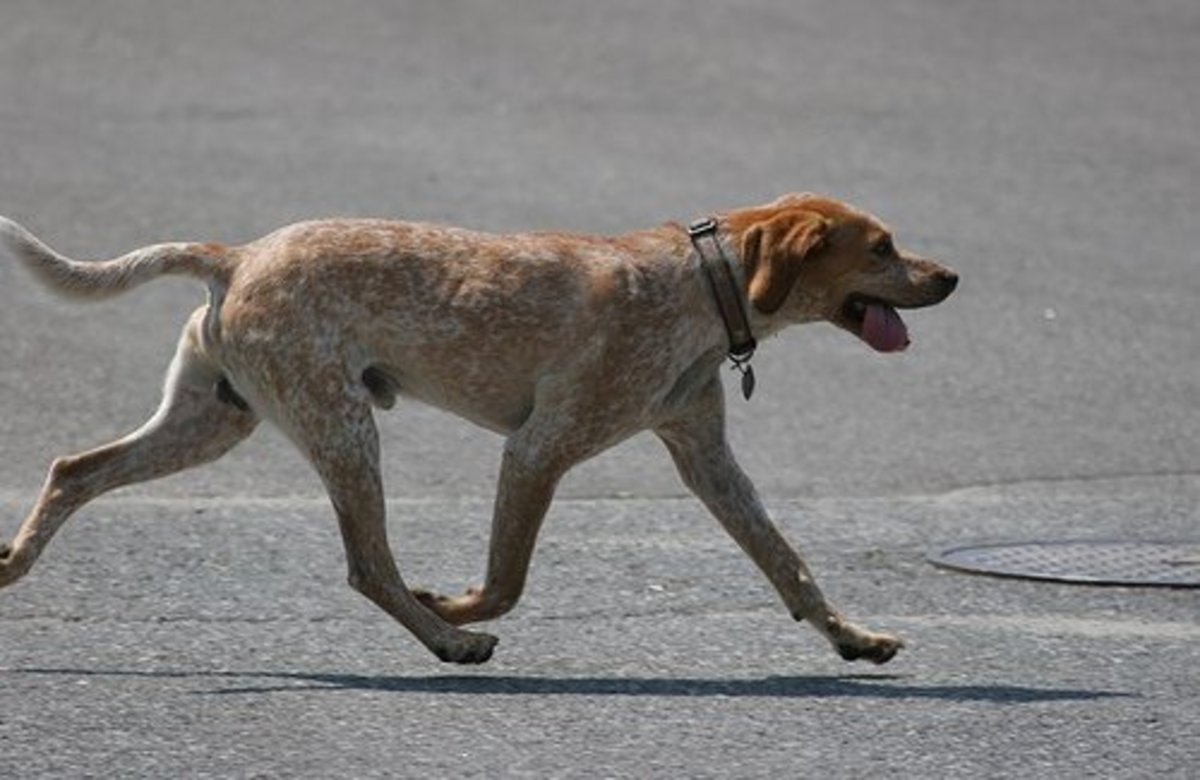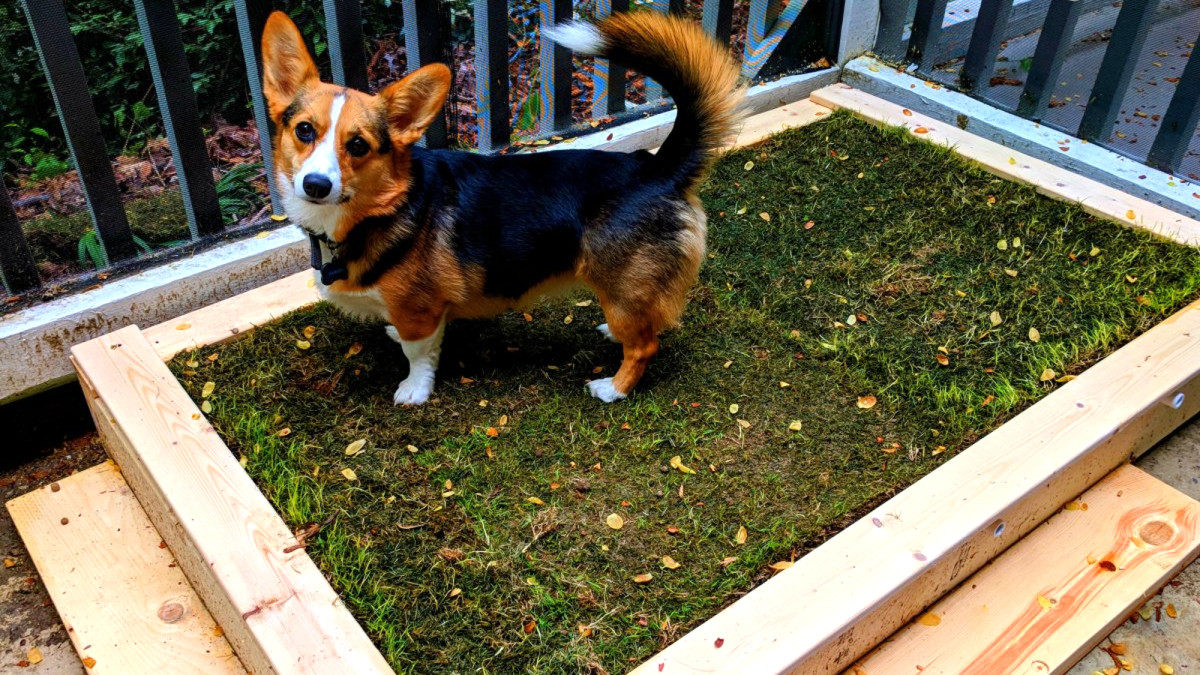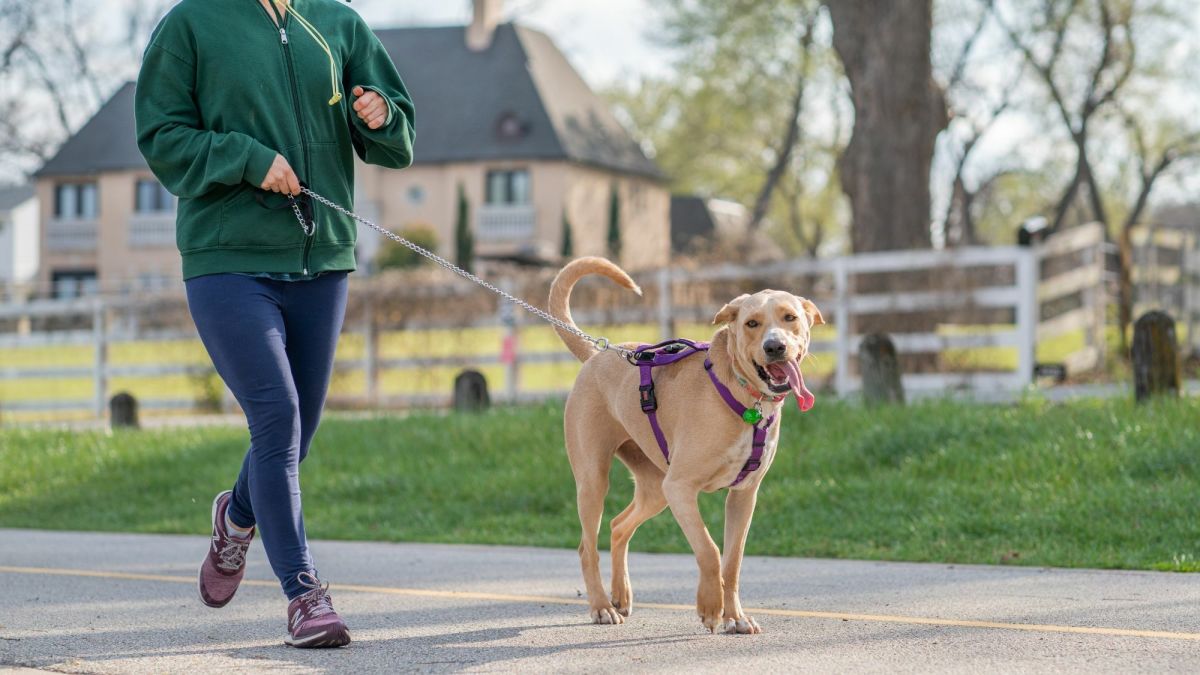How Do I Get My Dog to Bring the Ball Back?

"So how do I get my dog to bring back the ball? Shouldn't my dog do this naturally? Why is my dog swerving away right when I try to get the ball? I see many dogs play fetch at the dog park and many of them weren't even trained!"
These are all good questions. Most of us are familiar with dogs playing fetch. We see dogs fetching all the time at the dog park and we even see dogs fetching various things on T.V. shows or commercials. Fetching should be something dogs do naturally or if not, it should be fairly easy to train, right?
Well, the answer is that it really depends on the individual dog. Not all dogs are created equally. If all dogs were crafted with a cookie cutter, we would have dogs with the same personalities. Instead, more than being clones, dogs are unique as snow flakes. That's the beauty of dogs. Even within a litter of puppies, you'll have significant variances. Not two dogs are alike.
So before getting frustrated about your dog not bringing the ball back, consider what may be going on in Rover's mind. To us, getting a ball and bringing it back may seem like something fairly easy, but from a dog's perspective there can be several challenges they may struggle with.
Getting impatient or forcing your dog to enjoy the game will never help in cases as such. Dogs can sense an owner's frustration and they'll start associating it with the ball-tossing activity. This can put a permanent dent on any potential progress you could have made if you just stayed chill and happy.
5 Reasons Dogs Won't Bring the Ball Back
If your dog won't bring the ball back, don't feel bad. You are not alone. Countless dog owners are dealing with this problem so you are in good company. Following are some reasons why dogs may be reluctant to bring the ball back.
The Influence of Breed
When it comes to certain predispositions towards certain behaviors, let's consider the influence of breed. Some dog breeds are naturally predisposed to fetching, while others don't even know what to do with a ball. This can explain why a Golden retriever is often seen eagerly fetching balls at the park, while a beagle may look at you as if you're crazy when you toss him the ball.
Golden retrievers and Labrador retrievers are dog breeds that were selectively bred for centuries to bring back downed birds to the hunter, tend to have a natural inclination for fetching. They're called retrievers for a reason!
Of course, even here there may be exceptions to the rule. You may have golden retrievers or Labrador retrievers who may show signs of not inheriting good "fetching genes," and then you may have dogs like my Rottweiler (a breed selectively bred for herding livestock and pulling carts) who went crazy over a game of fetch without much training involved.
Wanting to Play Keep-Away
Does your dog grab the ball when you chase it and then the moment you try to get it from him, he'll swerve away? If so, in this case you may be dealing with dogs who want to play a totally different game than fetch: introducing, "the keep-away game. "
The keep-away games goes just like this: you toss the ball, your dog grabs it and playfully comes towards you. The moment you move towards him, he'll quickly swerve in hopes of you chasing him.
Many dogs love to play keep away games with other dogs and they may often try to involve humans too. However, there are several drawback in playing keep-away games with dogs, and one of them is that it puts a dent in teaching your dog to play fetch and releasing anything your dog has snatched and is carrying in his mouth.
The Guarding Factor
And then you have dogs who won't bring you the ball back because they are somewhat possessive. To many dogs, a ball is a resource that they may feel propense to guard. Some dogs resource guard toys like a ball as fiercely as they would with a bone.
Your dog doesn't have to growl or bare teeth to show signs of resource guarding. There can be a variety of much more subtle signs and one of them is a dog who is reluctant to give up a ball.
Something we need to therefore consider is that playing fetch requires a basic foundation of trust and this may need to be built overtime. If you have a dog who is a little possessive of the ball, he may struggle in giving it up to you on request.
The Impact of Collar Grabs
Watch for dogs scared of collar grabs. Sometimes we may have inadvertently inculcated in our dogs a reluctance to come close to us because we have grabbed their collars in the past for correcting the dog or dragging him out of trouble or snatching him from getting something or maybe for a timeout. This can all backfire with a dog who is isn't comfortable with us getting close to them and so they'll swerve away instinctively. To prevent this, I encourage dog owners to make collar grabs pleasant from an early age. This is found under my article on handling exercises for puppies.
Not Understanding the Game
And then you have dogs who don't bring the ball back simply because they aren't familiar with the rules of playing fetch. When you toss them a ball, perhaps they think just about chewing the ball because they like the texture of it or dogs just find it more fun to shake their toys and then destroy them.
On top of this, consider that teaching a dog who is not naturally predisposed to playing fetch (or who doesn't grasp the concept of bringing back a ball a dozen times) may not be easy. More on this below.
Not As Easy as Thought
Before looking at tips to teach a dog to bring the ball back, it's important perceiving fetch from a dog's perspective. Some dog owners sometimes believe that their dogs lack intelligence if they can't carry out a task while other dogs seem to do so very easily. Once again, it boils to several factors.
Not all dogs are smart in the same ways. They just all have their areas of expertise. Just as some humans can type on a keyboard with their eyes closed but they may fail to sew a button.
A String of Discrete Behaviors
Firstly, we need to consider that to us humans, fetching may seem like an easy task. Dogs just have to catch the ball and bring it back. From a dog's perspective, the exercise is instead made of a string of discrete behaviors put together in a chain. It would look like something like this:
Watch the owner toss the ball→run after the ball→open the mouth to grasp the ball→close the mouth to hold it→carry the ball for several steps→bring it to the owner→drop it in front of the owner or into the owner's hands.
Putting together all these behaviors is not an easy task, unless, your dog is naturally inclined to perform this behavior.
It's somewhat a form of advanced, specialized training if we think about it, similar to many service dog tasks such as retrieving a dropped object or getting the keys or phone and bringing it to the owner.
How Do I Get My Dog to Bring The Ball Back?
As seen, dogs have their own reasons for not wanting to bring the ball back. It goes without saying that different motivations may require different approaches. So the next question is: "how do I get my dog to bring the ball back?" Following are several methods and tips.
Forward Chaining a Retrieve
The easiest method for most dog owners to train is to simply train fetch using a method known as forward chaining. The discrete behaviors of the chain are trained in order. The ball is tossed, the dog picks it up and then the dog is called. The dog comes to the owner and drops the ball and the ball is tossed again.
This method is often the one most commonly used for dogs who are naturally predisposed to retrieving. This is because dogs who love to fetch are addicted to the game and dropping the ball comes easy to them because it's very reinforcing for them to have the ball tossed again and again.
This method though won't work very well with dogs who are struggling to bring the ball back. These dogs may not want to give up the ball and they may not want to come when called. So more troubleshooting is needed.
The Two-Ball Method
The two-ball method might work well for dogs who will pick up the ball but are reluctant to bring the ball back ad tend to swerve if you try to get it. In this method, you'll need two balls (one in your hand, the other in your pocket).
It goes like this: you will toss the ball, the dog will pick it up, you would then attract your dog by showing him another ball and bouncing it around. Your dog at this point, will be likely to approach. Walk backwards a few steps to encourage him to approach. The moment he is close to you, and drops his ball, toss the other ball Chances are, he'll go grab the other ball you just tossed.
Even better, fill up a bucket with balls and keep trading. Repetition after repetition, your dog will understand that in order to chase another ball, he must first bring back the one he already has.
Please note: if you choose to try this method, don't fall into the temptation of pretending to toss the ball just for the sake of getting him to drop. This leads to suspicion in the dog and a future reluctance to drop. Dogs are not stupid!
Back Chaining a Retrieve
Back chaining may help a dog who is little reluctant over giving up the ball. Back chaining in dog training means that you'll be teaching the last behavior of the chain first and then move in reverse order moving forward towards the beginning. When you train using back chaining, the last behavior of the chain becomes particularly reinforcing.
A retrieve trained backwards would therefore look like this:
- First, you would teach the dog to hold the ball in his mouth and drop it. Here's how to train a dog to "drop" on cue: the leave it and drop it command.
- Afterward, you add some distance so your dog would hold the ball in his mouth and have to bring it to you so he can drop it.
- Next, you would toss the ball, have your dog catch it, bring it towards you and drop it in your hands.
Some Things to Consider
Dogs thrive on learning, but they do far better when we teach them behavior using small steps and making the sessions short and sweet rather than moments. It is more effective and fun to make this a brief exercise at various times rather than long and tedious.
On top of this, we need to consider that if ours dogs do not show much interest in playing fetch, we shouldn't get frustrated or impatient. Forcing a dog to play fetch will no longer make it fun. From a game, it will turn into a chore.
Just like forcing a child to take piano lessons, when a child is enamored with art, trying to persuade a dog to like fetch can get you no where as the heart isn't in to it.
Fortunately, there are many other ways you can play with your dog. You can try with a flirt pole or play nose work games or brain games. You can also take your dog to agility classes. The best part? You won't end up with a dog obsessed about playing fetch!
A Word of Caution
If your dog is possessive over toys, and in this case, the ball, you will need to set a foundation of trust and create a positive conditioned emotional response to dropping the ball. In other words, you'll be practicing trading the ball with something that your dog perceives to be more valuable. This will take some time to instill.
With possessive dogs though caution is needed. Possessive dogs may bite if they feel threatened. For safety, it would be therefore important consulting with a dog behavior consultant such as a board-certified veterinary behaviorist or a Certified Applied Animal Behaviorist.
This content is accurate and true to the best of the author’s knowledge and is not meant to substitute for formal and individualized advice from a qualified professional.
© 2025 Adrienne Farricelli CPDT-KA, Dip.CBST

